ODROID-C4 is a new generation single board computer that is more energy efficient and faster performing than ODROID-C2 which was introduced over four years ago as the world’s first affordable ARM 64bit computer.
The main CPU of the ODROID-C4 is built with a quad-core Cortex-A55 cluster with a new generation Mali-G31 GPU. The A55 cores run at 2.0Ghz without thermal throttling using the stock heat sink allowing a robust and quiet computer. The CPU multi-core performance is around 40% faster, and the system DRAM performance is 50% faster than the ODROID-C2.

| A | CPU (Amlogic S905X3) | H | 2 x System LED indicators |
| B | DDR4 memory (4GiB) | I | 1 x UART for system console |
| C | 4 x USB 3.0 host ports | J | 1 x IR receiver |
| D | 1 x RJ45 Ethernet port (10/100/1000) | K | 40 x GPIO pins |
| E | 1 x HDMI 2.0 | L | 7 x GPIO pins |
| F | 1 x Micro USB 2.0 port (OTG) | M | 1 x eMMC module socket |
| G | 1 x DC power jack (Outer diameter : 5.5mm, inner diameter : 2.1mm) | N | 1 x Micro SD slot |
CPU performance
Dhrystone-2, Double-Precision Whetstone, 7-zip compression benchmark results show the ODROID-C4 system performance is 40 ~ 55% faster than the previous generation ODROID-C2.
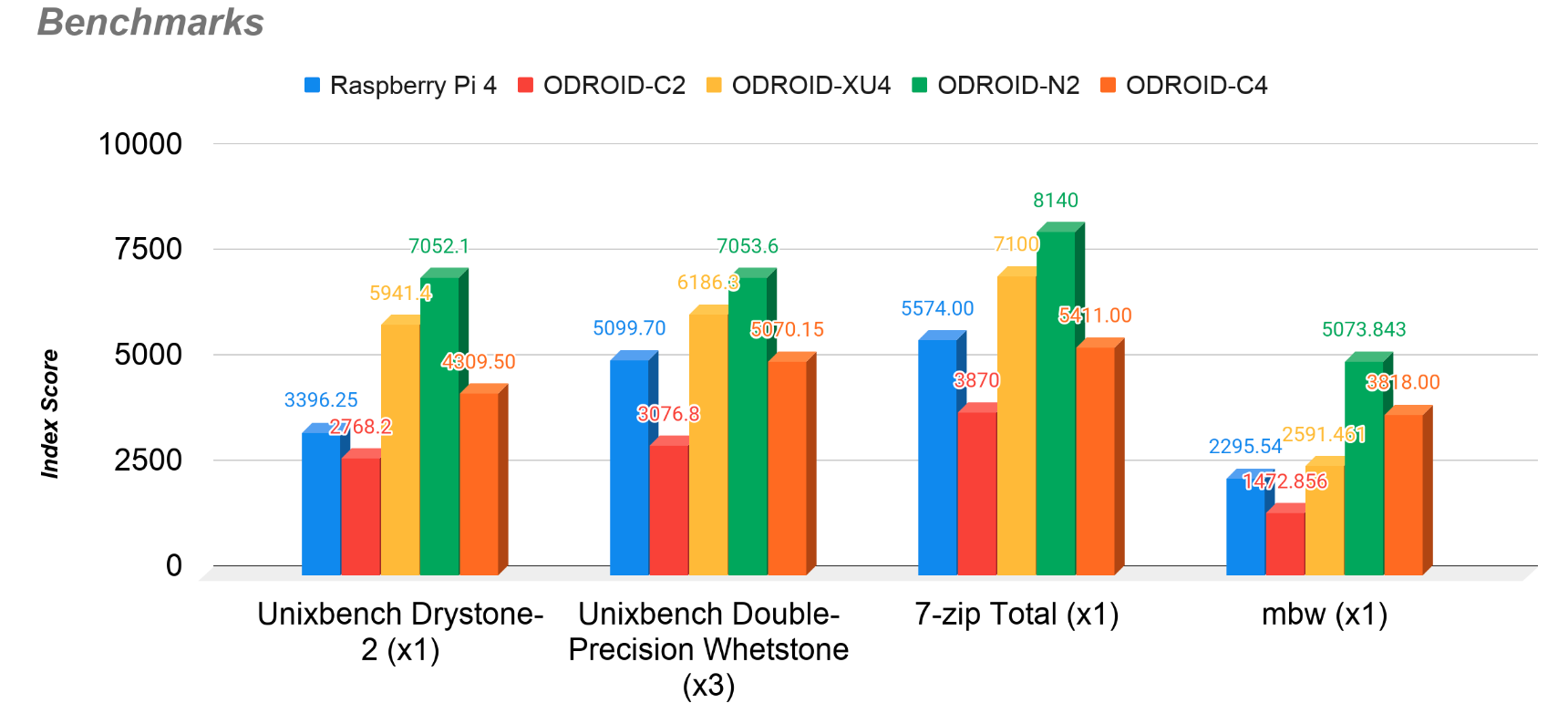
GPU performance
The Mali-G31 runs at 650MHz and is ~50% faster than Mali-450MP in ODROID-C2. The Mali-G31 is the first generation Bifrost-based mainstream GPU from Arm.
GPU performance was measured with the glmark2-es2 “–off-screen” option.
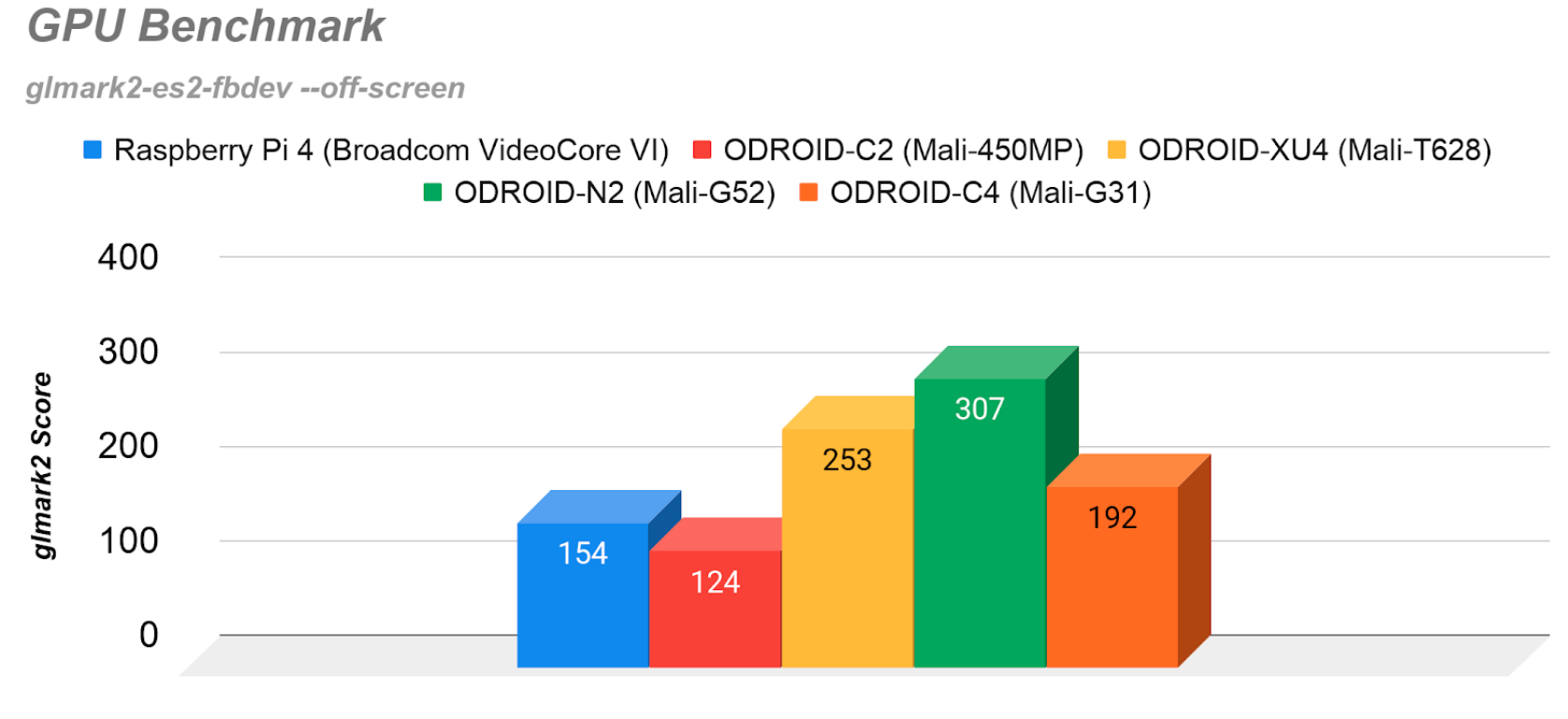
RAM performance
Why does DDR4 matter? ODROID-C4 DDR4 RAM runs at 1320Mhz. The memory bandwidth is 1.6 times higher than ODROID-C2.

CPU frequency vs performance
Some ODROID users may recall the lower than expected clock speed with ODROID-C2’s S905.
We ran a test to confirm the ratio between CPU clock frequency and performance with ODROID-C4.
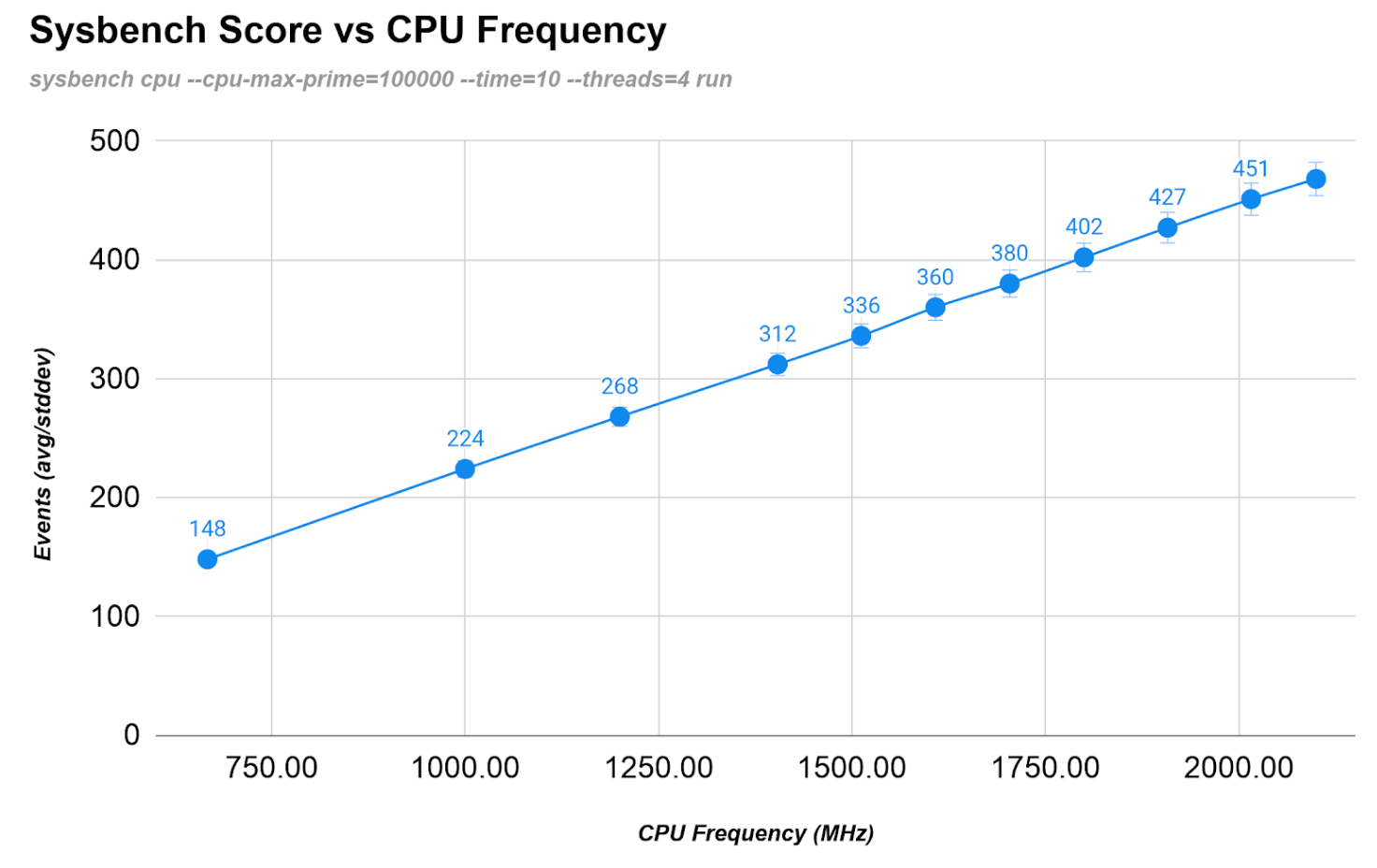
Thermal characteristics
To check thermal throttling, we ran some heavy CPU and GPU loads together on the SoC and monitored the temperature. We ran the test within a chamber that maintains the ambient temperature at 25°C.
Note that the current thermal throttling point is set at 75°C in the Kernel configuration.
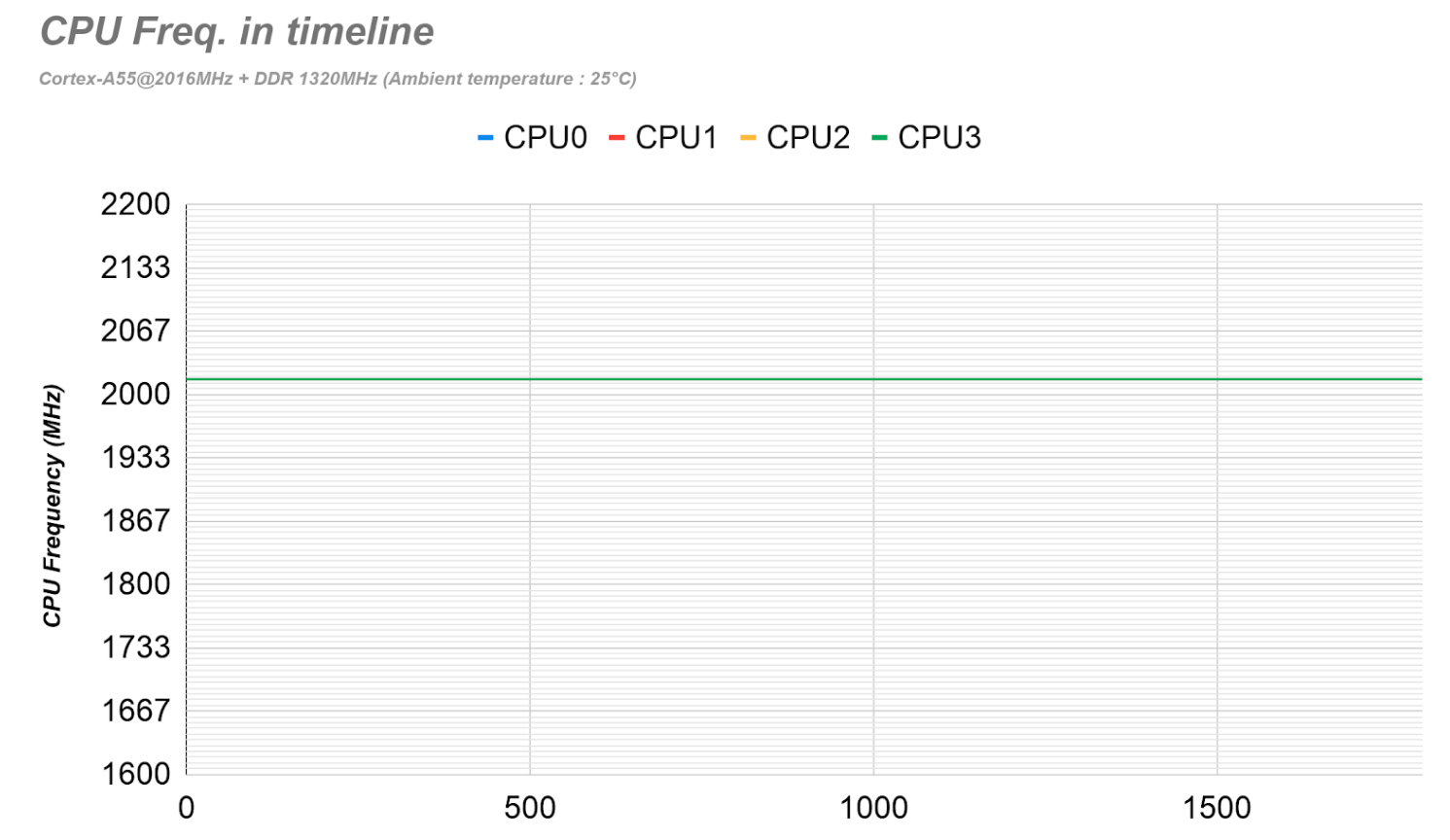
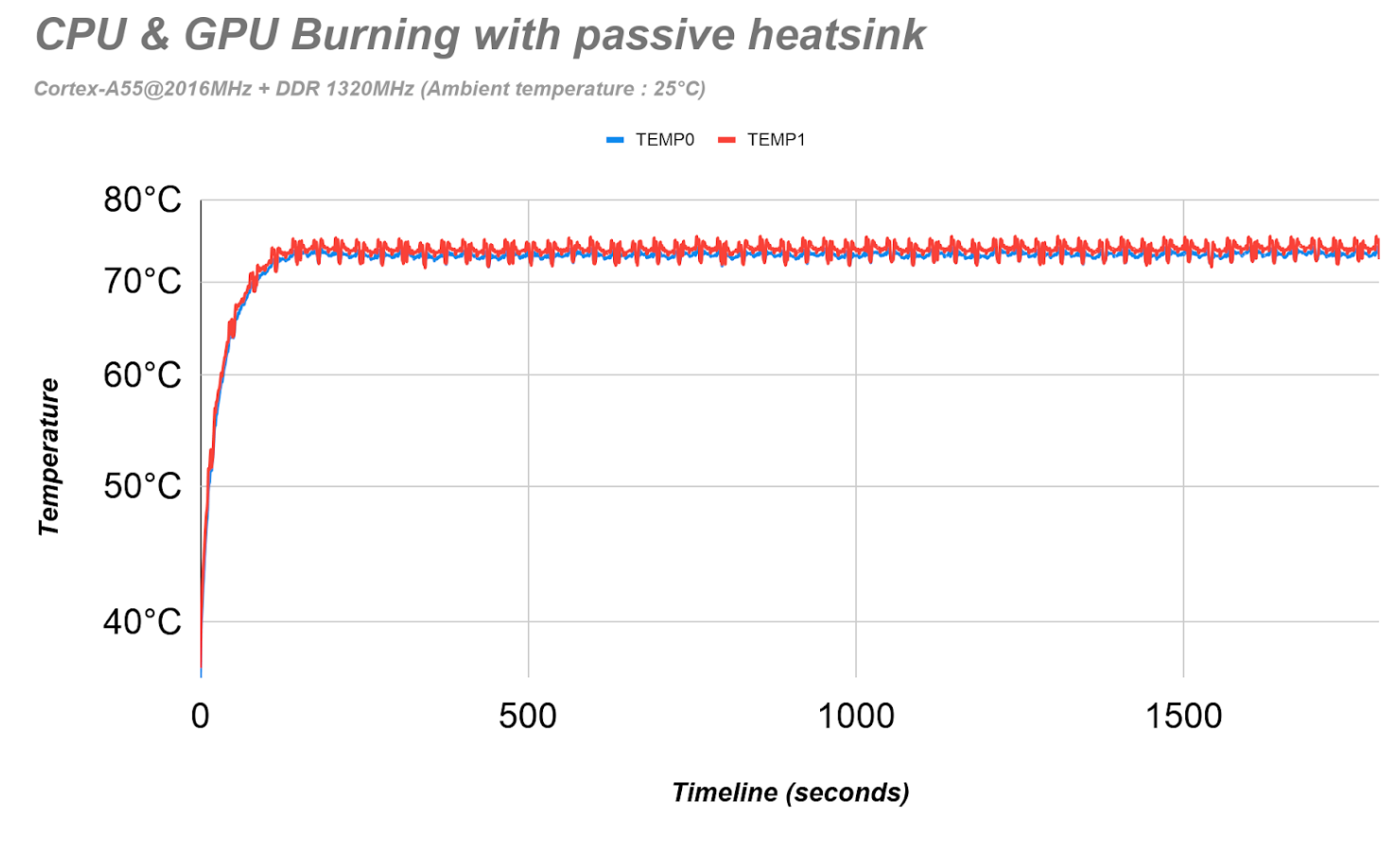
Note that if you put the ODROID-C4 board into an enclosure, you may encounter some thermal throttling issues when the ambient temperature is higher than 20°C and the continuous computing load is very high.
Ethernet
According to our iperf test result, the throughput performance was near 1Gbps.
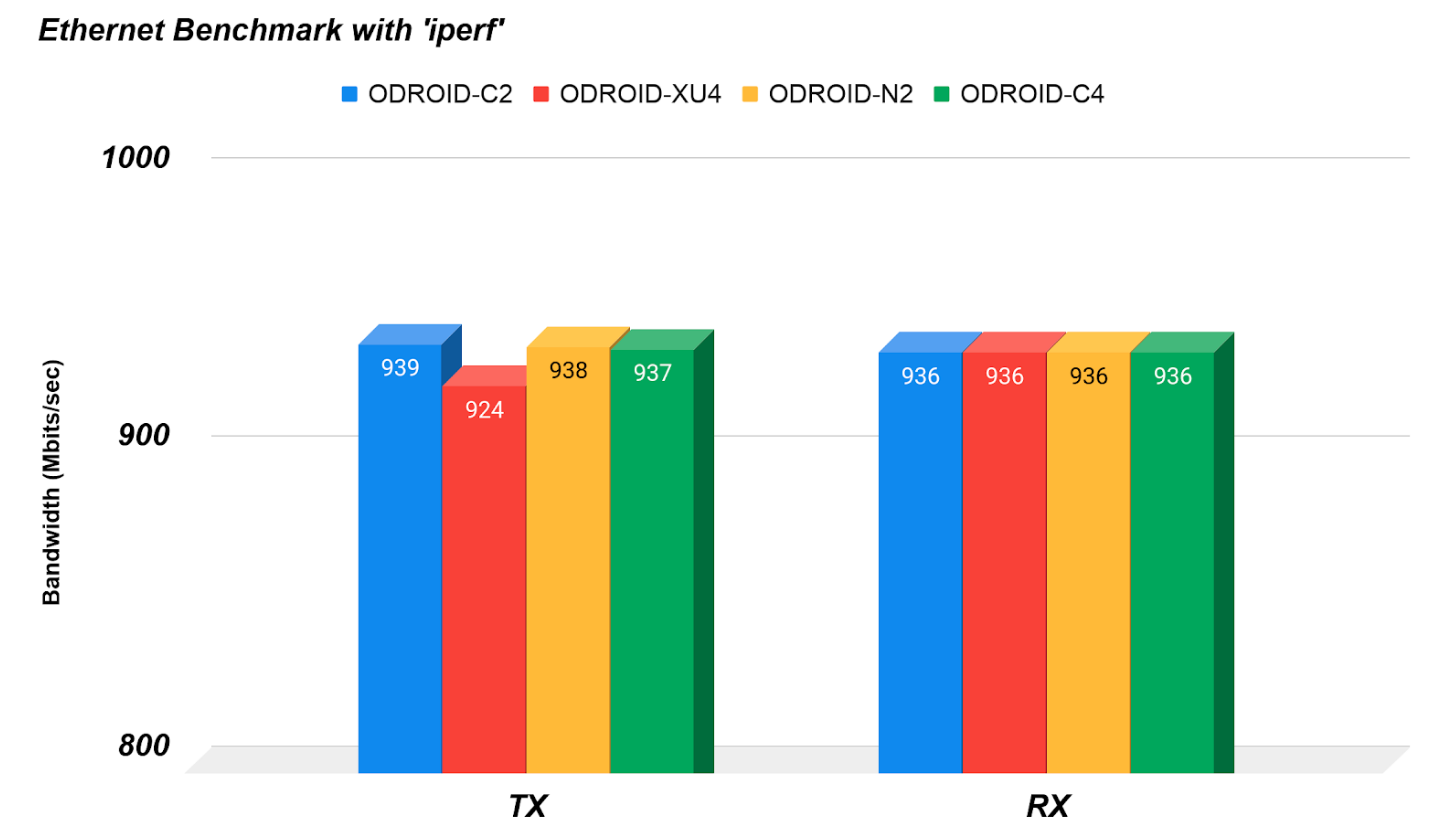
USB Host
We measured the USB3 transfer speed with a UAS capable SSD.
The average ~340MB/s of throughput should be acceptable for many applications.
Since four USB host ports share a single root hub, the transfer rate will be lower if you use multiple USB3 devices at the same time.
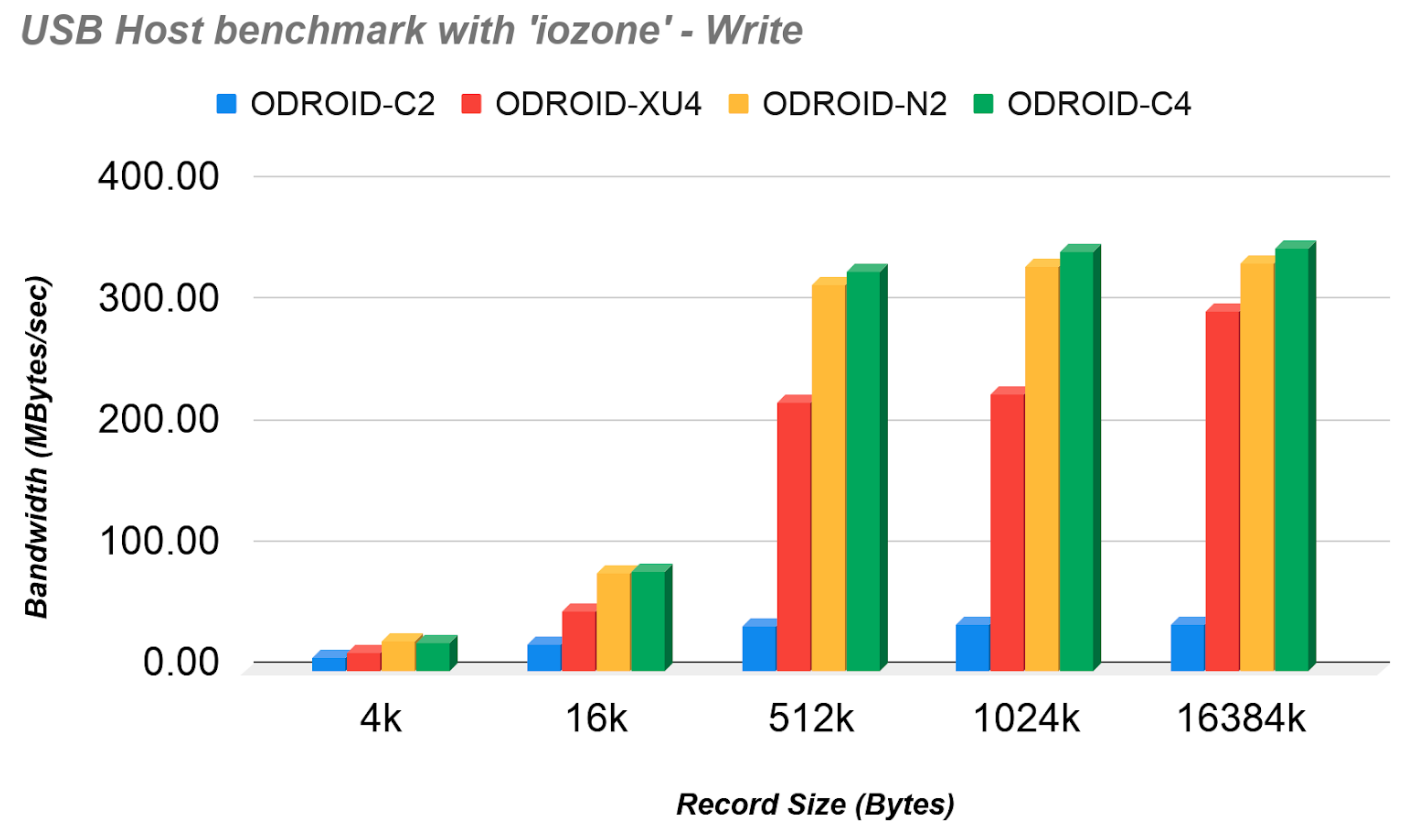
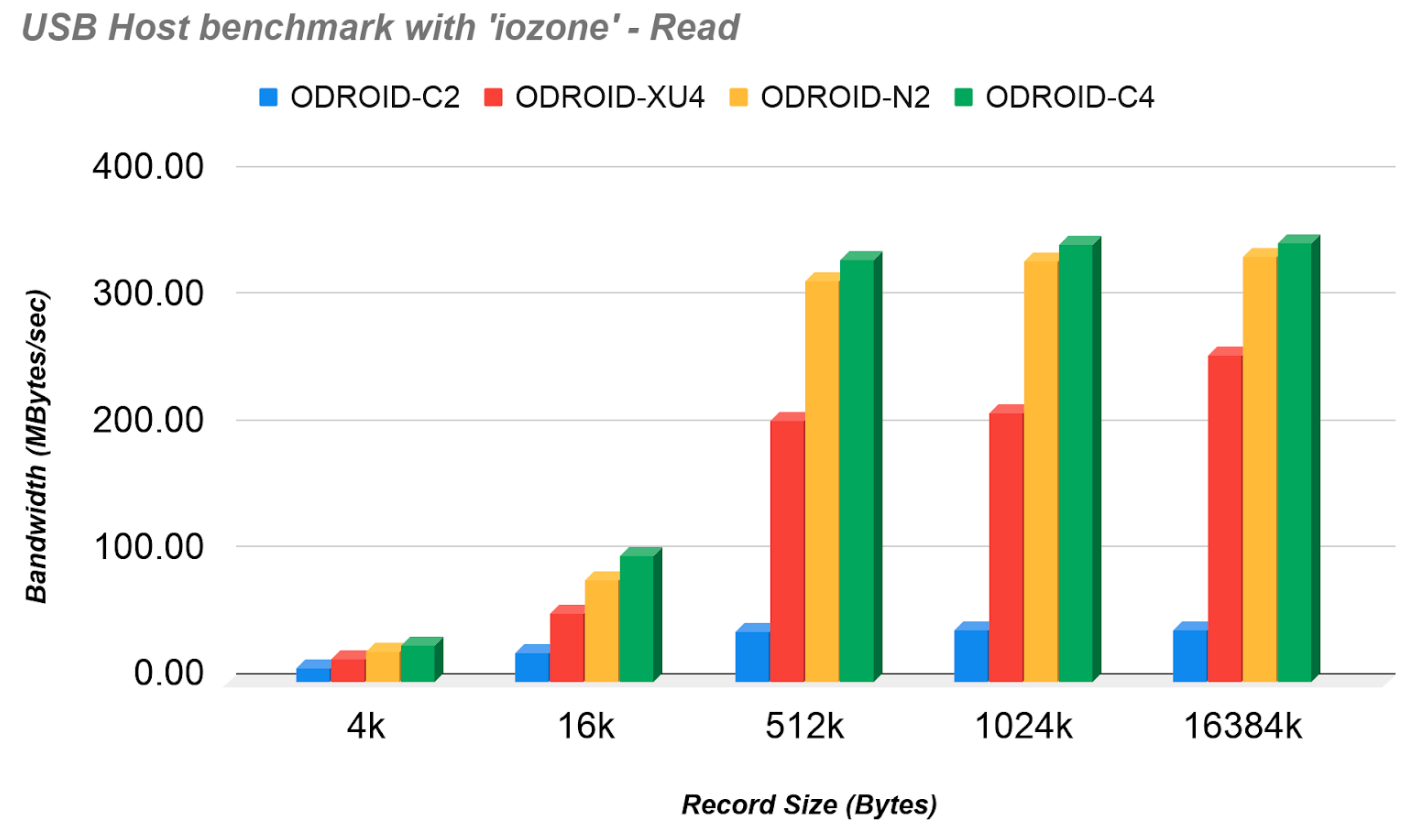
eMMC storage performance
Sequential read and write speed is over 165MB/s and 125MB/s respectively.
4K random access performance is reasonably fast too. iozone test results are as follows.
Micro-SD UHS performance
Using properly implemented UHS dynamic voltage scaling, the sequential read and write speed is over 70MB/s and 50MB/s respectively.
Cryptography
The ARMv8 architecture supports hardware accelerated crypto extensions for building a secure system. As expected, we could see very decent openSSL performance with ODROID-C4.

GPIO (40Pin Header)

The ODROID-C4 GPIO interface is similar to C2 and fully supports a 3.3Volt interface. This is beneficial for using various peripherals without complicated level shifters as with the XU4’s 1.8Volt GPIOs. Another big improvement is a faster SPI bus interface with a maximum frequency of about 100Mhz. It is significantly faster than the ODROID-C2’s 400Khz software “bit-banged” SPI.
Power consumption
Thanks to the modern 12nm fabricated S905X3 CPU, the power consumption and heat dissipation are relatively very low.
Therefore, we can enjoy a quiet and powerful computer with high energy efficiency.

Idle state: ≃ 0.18 Watt
Heavy load state: 3.1~3.3 Watt (stress-ng –cpu 4 –cpu-method matrixprod)
No cables are attached except DC power input and USB-UART debug console cable.
Note:
- The power consumption in “IDLE” is measured when a device is not being operated for 5 minutes since the CPU governor is set to ‘performance’.
- The measured power consumption is not absolute and could vary in certain conditions.
Specifications
| Form factor |
Board Dimensions: 85mm x 56mm x 1.0mm
Heatsink Dimensions: 40mm x 32mm x 10mm Weight: 59g including heatsink |
| Processor |
Amlogic S905X3 12nm Processor
L1 instruction cache: 32 KB, 4-way set associative (128 sets), 64 byte lines, shared by 1 processor L1 data cache: 32 KB, 4-way set associative (128 sets), 64 byte lines, shared by 1 processor L3 data cache: 512KB , 16-way set associative (512 sets), 64 byte lines, shared by 4 processors Quad-Core Cortex-A55 (2.016GHz) ARMv8-A architecture with Neon and Crypto extensions Mali-G31 MP2 GPU with 4 x Execution Engines (650Mhz) |
| Memory |
DDR4 4GiB with 32-bit bus width
Data rate: 2640 MT/s (PC4-21333 grade) 1.2Volt low power design |
| Storage |
1x eMMC connector (8/16/32/64GiB are available)
1x Micro SD slot (DS/HS mode up to UHS-I SDR104) |
| Networking |
1 x GbE LAN ports (RJ45, supports 10/100/1000 Mbps)
– Realtek RTL8211F (Ethernet transceiver) – LED indicators * Green LED: Flashing by data traffic at 100Mbps connection * Amber LED: Flashing by data traffic at 1000Mbps connection Optional WiFi USB adapters |
| Video | 1 x HDMI 2.0 (up to 4K@60Hz with HDR, CEC, EDID) |
| Audio |
1 x HDMI digital output
1 x Optional SPDIF optical output |
| External I/O |
4 x USB 3.0 Host ports (shares one single root hub)
1 x USB 2.0 OTG port for Host or Device mode. (No power input) 1 x Debug serial console (UART) 1 x Peripheral Expansion Header (40-pin, 2.54mm pitch)
1x Audio Expansion Header (7-pin, 2.54mm pitch)
– All 3.3V I/O signal level except for ADC input at max 1.8Volt. |
| Other features |
IR receiver for remote controller
System LEDS Indicators: – Red (PWR) – Solid light when DC power is connected – Blue (ALIVE) – Flashing like heartbeat while Kernel is running. |
| Power |
1 x DC jack : outer (negative) diameter 5.5mm, inner (positive) diameter 2.1mm
DC input : 5.5V ~ 17V – DC 12V/2A power adaptor is recommended Power consumption: – IDLE : ≃ 1.8W – CPU Stress : ≃ 3.64W (Performance governor) – Power-off : ≃ 0.14W |



